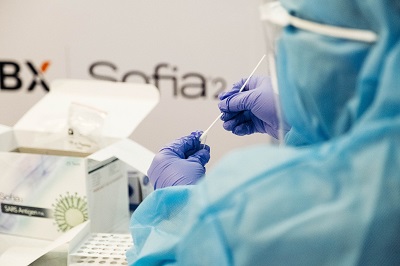What preparatory work should be understood before applying for B-class in vitro diagnostic medical device registration with Malaysia's MDA?
Release time:2024-10-31 15:59:43
The author:
source:
Familiarize Yourself with Relevant Regulations: Review the Medical Device Act 2012 and its associated regulations to understand the legal requirements for device registration in Malaysia.
Before applying for B-class in vitro diagnostic (IVD) medical device registration with Malaysia's Medical Device Authority (MDA), it's crucial to understand and prepare several key elements to ensure a smooth application process. Here’s a comprehensive list of preparatory work to consider:
1. Understand the Regulatory Framework
- Familiarize Yourself with Relevant Regulations: Review the Medical Device Act 2012 and its associated regulations to understand the legal requirements for device registration in Malaysia.
- MDA Guidelines: Read the guidelines specifically related to the registration of medical devices and IVDs to grasp the processes, requirements, and expectations.
2. Device Classification
- Verify Device Classification: Ensure that the device is classified correctly as B-class according to MDA's classification criteria. Class B IVDs are low to moderate-risk devices, and understanding the classification will help in preparing the necessary documentation.
3. Quality Management System (QMS) Preparation
- ISO 13485 Compliance: Establish or ensure compliance with a QMS that adheres to ISO 13485 standards. This includes documentation of processes, procedures, and records to demonstrate quality management practices in device manufacturing.
- Internal Audits: Conduct internal audits to ensure the QMS is functioning effectively and meets regulatory standards.
4. Technical Documentation
- Prepare Technical Files: Gather all required technical documentation, including:
- Device description and intended use.
- Risk management report (ISO 14971).
- Performance evaluation data (clinical and non-clinical).
- Labeling and instructions for use (IFU).
- Format and Completeness: Ensure that all documents are formatted correctly and contain all necessary information to avoid delays in the application review.
5. Clinical and Non-Clinical Data
- Gather Evidence of Performance: Compile clinical and non-clinical data demonstrating the device's safety and efficacy. This includes performance testing results, comparative studies, and any relevant certifications.
- Statistical Analysis: Prepare statistical analyses that support the device's performance claims.
6. Risk Management Plan
- Conduct Risk Assessment: Develop a comprehensive risk management plan in accordance with ISO 14971, identifying potential hazards, assessing risks, and implementing control measures.
- Documentation of Risk Management: Ensure that all risk assessments and mitigation strategies are documented thoroughly.
7. Manufacturer and Authorized Representative
- Manufacturer Information: Compile relevant information about the manufacturer, including contact details, manufacturing locations, and any third-party suppliers involved.
- Local Authorized Representative: If applicable, appoint a local authorized representative in Malaysia to facilitate communication with MDA and manage regulatory compliance.
8. Cost Estimation
- Budget for Registration Fees: Estimate the registration fees and associated costs for preparing and submitting the application. This may include fees for clinical testing, documentation, and potential consultancy services.
9. Timelines and Planning
- Develop a Project Timeline: Create a timeline for the application process, including milestones for document preparation, internal reviews, and submission.
- Account for Delays: Be prepared for potential delays in the review process and plan accordingly to avoid disruptions in market entry.
10. Continuous Compliance Strategy
- Post-Market Surveillance Planning: Develop a plan for post-market surveillance to monitor the device's performance after it is launched in the market.
- Regulatory Updates Monitoring: Set up a system to keep abreast of any changes in regulations or standards that may affect the device or registration requirements.
Summary of Preparatory Work Before Application
- Understand the regulatory framework and MDA guidelines.
- Verify device classification as B-class.
- Establish or confirm compliance with ISO 13485.
- Gather and prepare comprehensive technical documentation.
- Collect clinical and non-clinical performance data.
- Develop a comprehensive risk management plan.
- Compile manufacturer and authorized representative information.
- Estimate costs for registration and related activities.
- Create a project timeline for the application process.
- Plan for post-market surveillance and regulatory compliance.
By thoroughly preparing in these areas, manufacturers can enhance their chances of a successful application for B-class IVD medical device registration with MDA, ensuring compliance and facilitating a smoother market entry.

Contact Us:
Whatsapp or Wechat:+86 15816864648;email address:hito.lin@grzan.cn
.png)
.jpg)
.png)

.png)